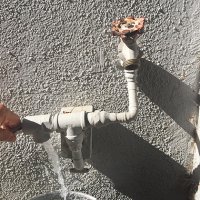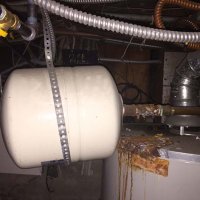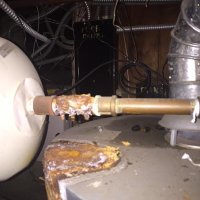Peter Taylor
New Member
Hello folks this is my first time in here. There is an outside faucet in our home that started making loud humming sounds. Yet the noise goes off as soon as we turn it on. It also goes off if any other indoors water source is on and that includes the faucet underneath the toilets. humming noise (like a foghorn) coming from the pipes. It is loudest right at the main shut off valve inside the house (which is in a closet).
This same outdoor faucet has a strange pipe attached on its side with some sort of lever. And when that faucet is turn off I am able to switch the lever and it releases water from the small pipe. Here are a couple of pix to make it easier to explain. Any help is welcome as to how I can solve this issue. Also please let me know the tools needed to solve this issue. TIA Peter
Peter

This same outdoor faucet has a strange pipe attached on its side with some sort of lever. And when that faucet is turn off I am able to switch the lever and it releases water from the small pipe. Here are a couple of pix to make it easier to explain. Any help is welcome as to how I can solve this issue. Also please let me know the tools needed to solve this issue. TIA



